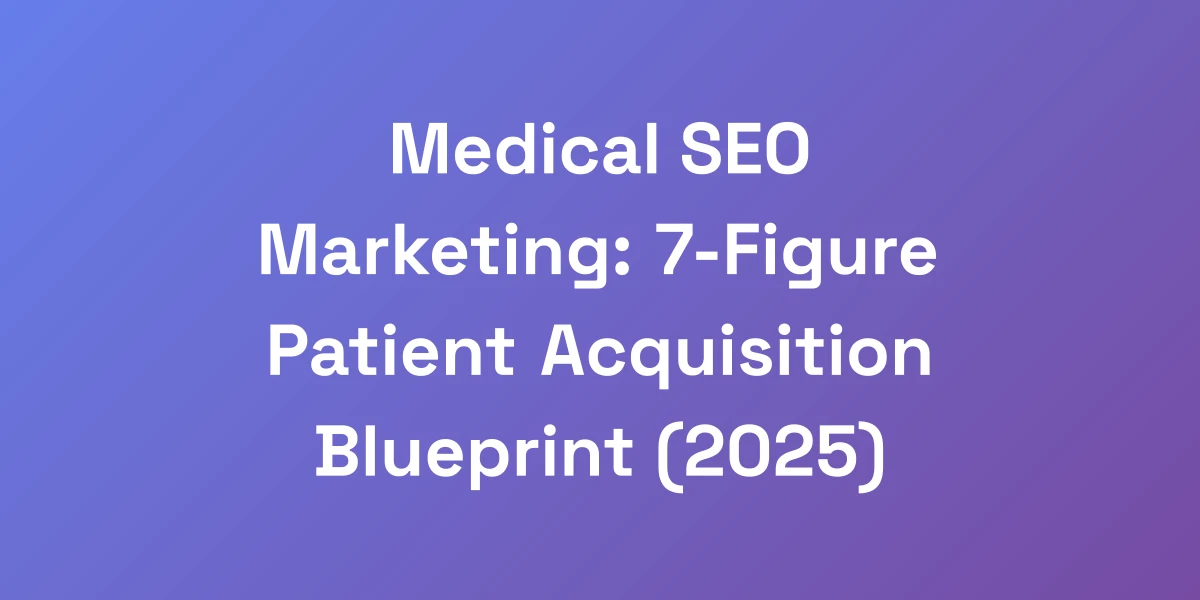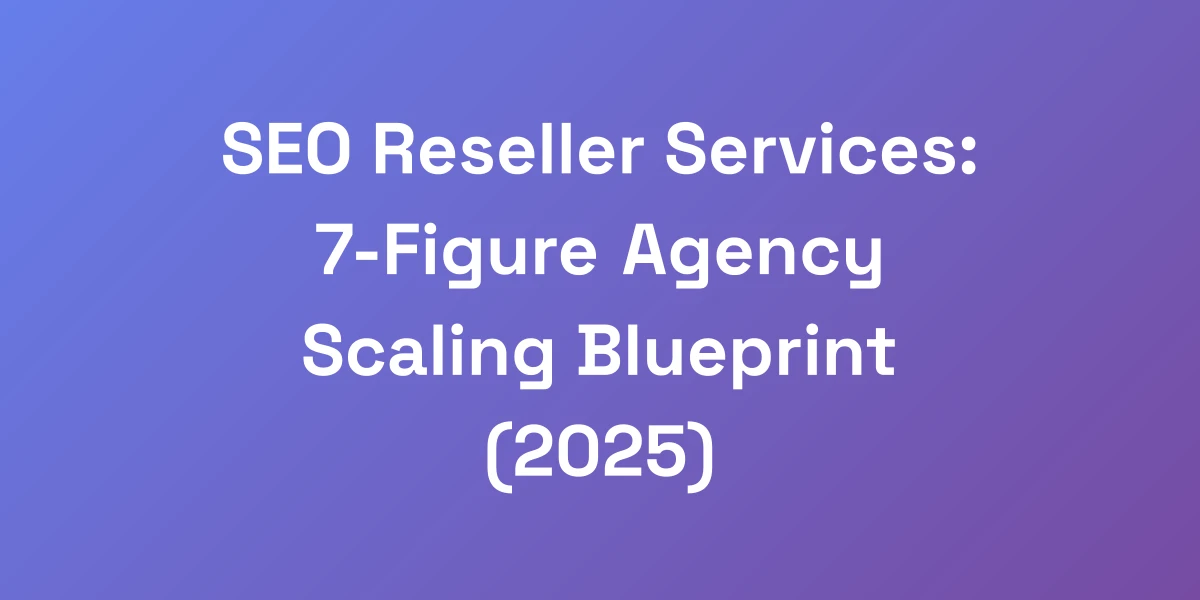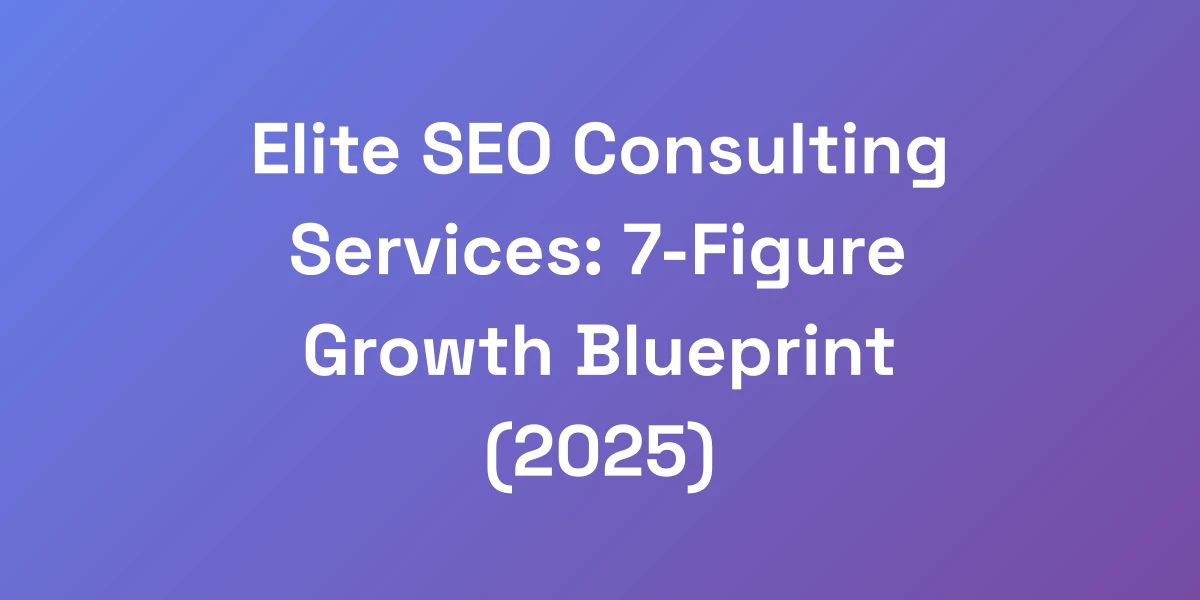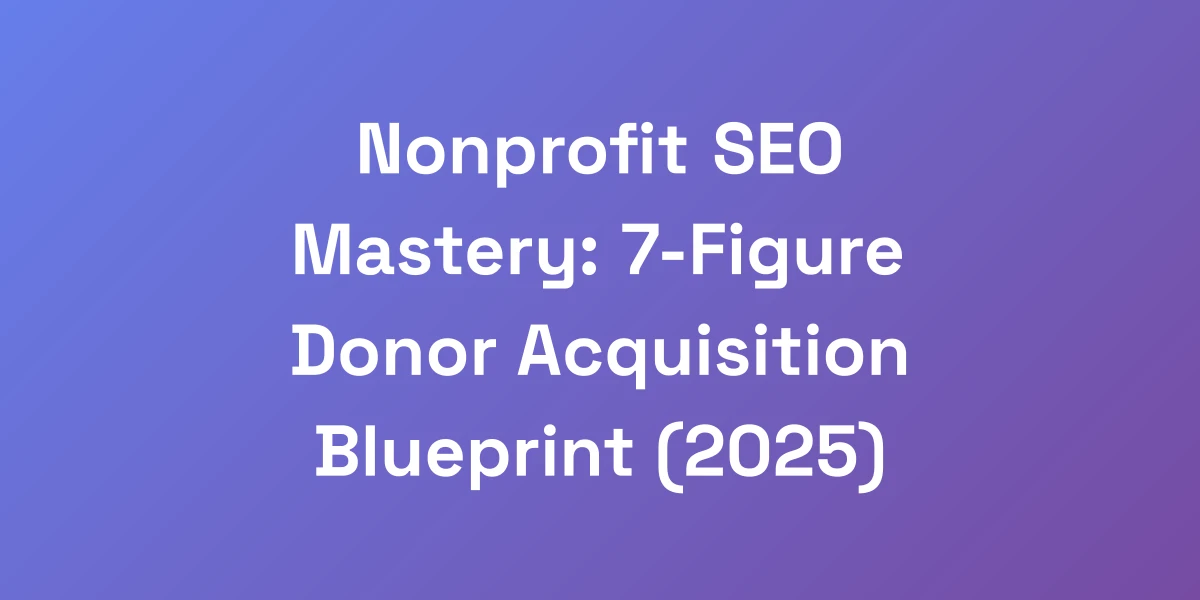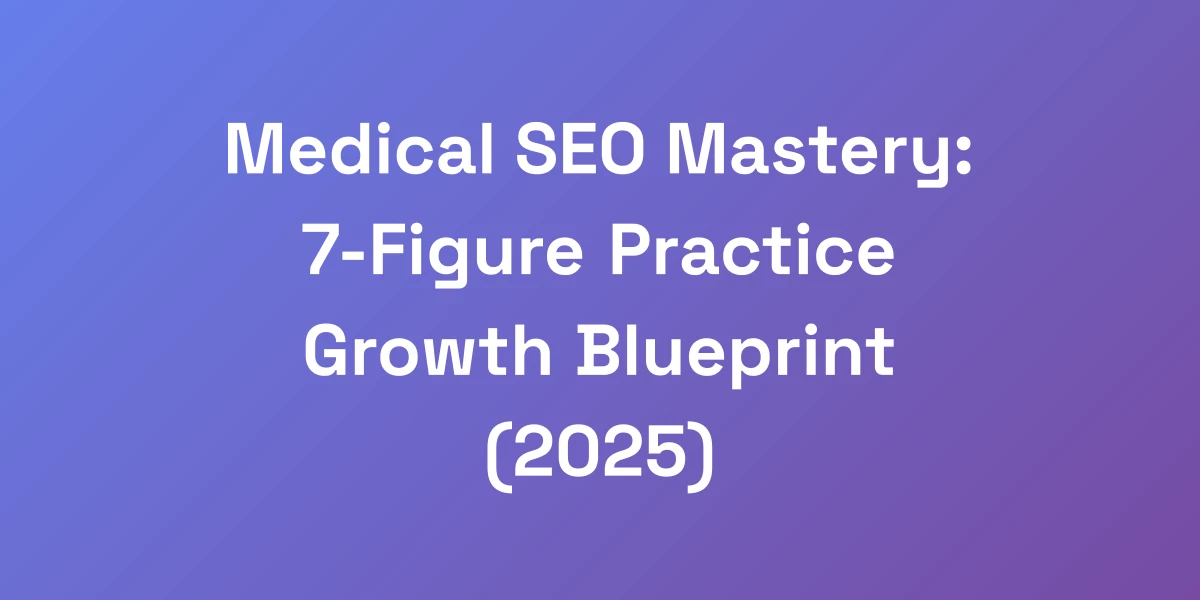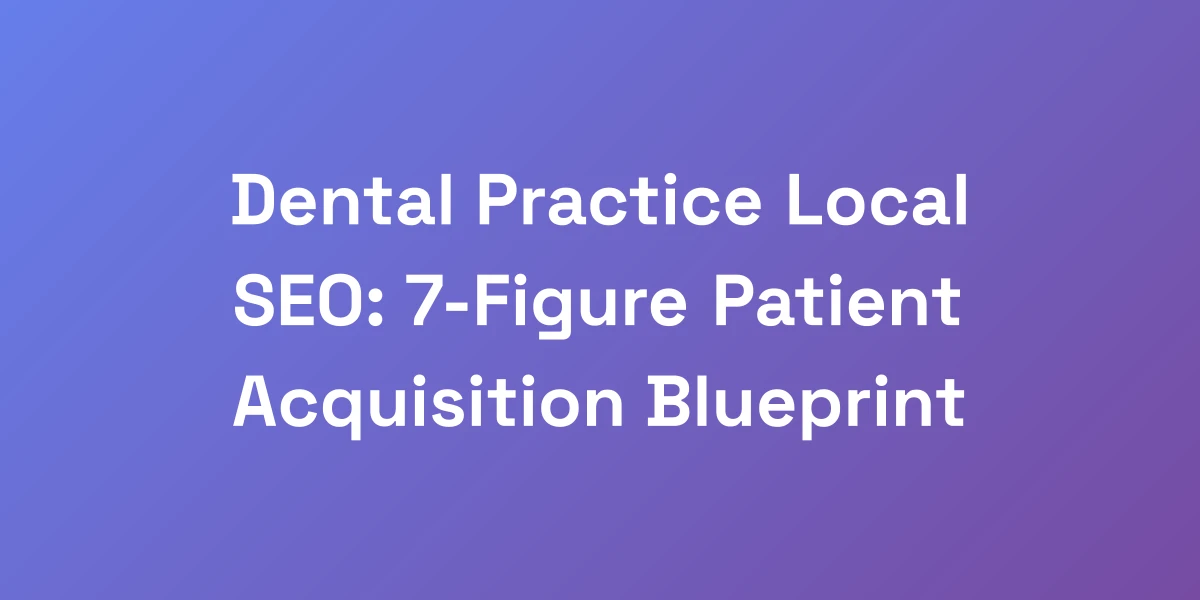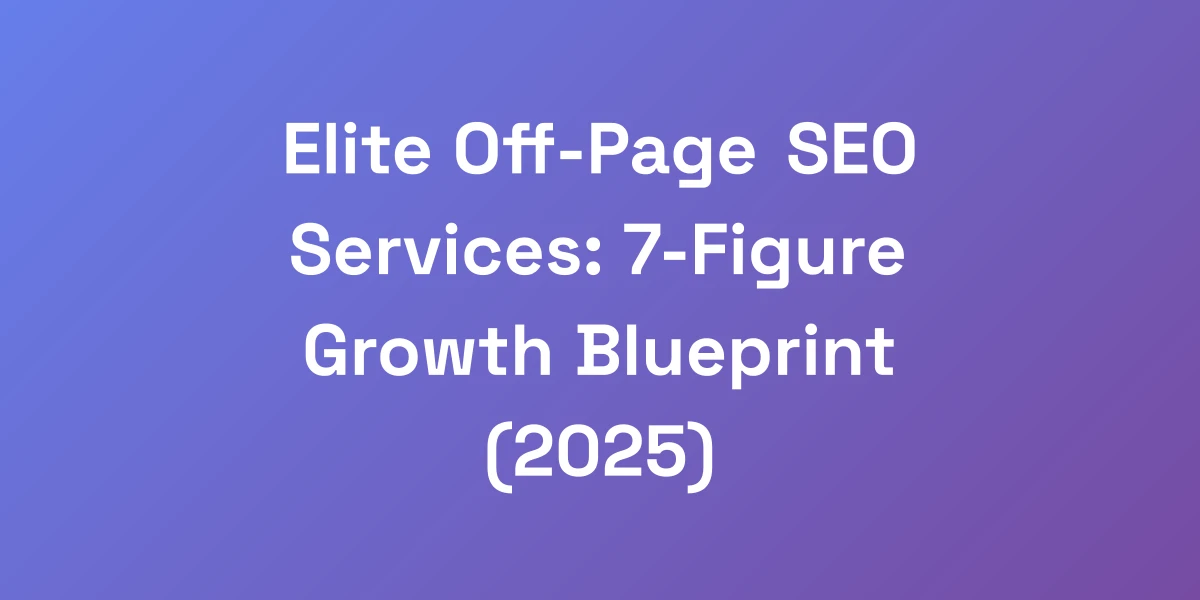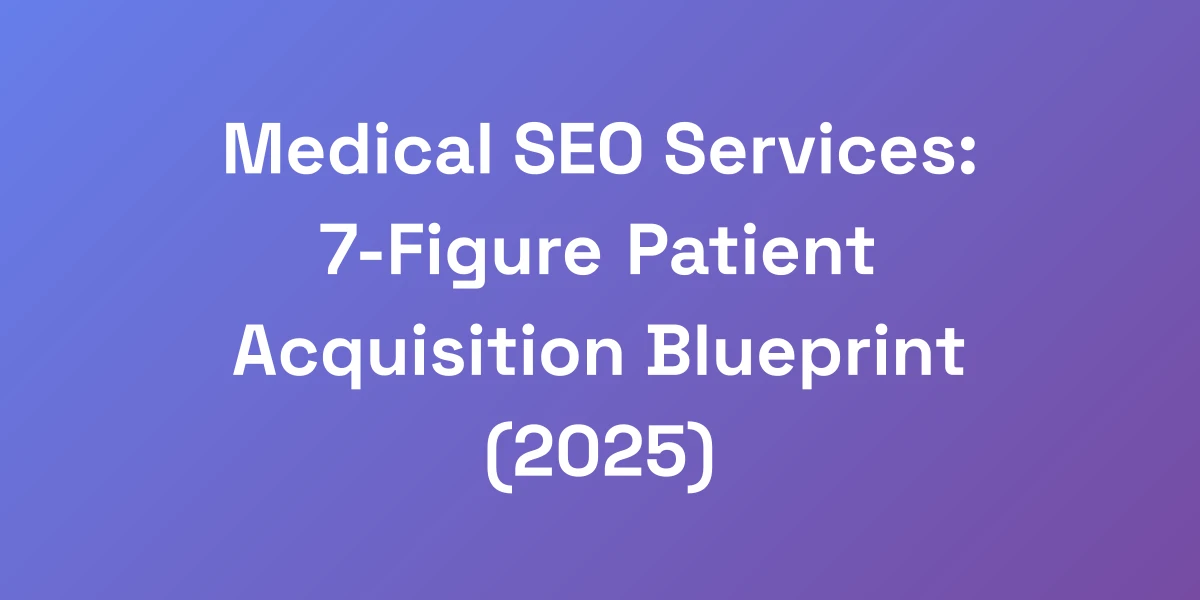
Medical SEO Services: 7-Figure Patient Acquisition Blueprint (2025)
Mar 18, 2025 | By [email protected]
Why 89% of Medical Practices Fail at Digital Patient Acquisition
Let us hit you with some truth: most medical practices are hemorrhaging money on ineffective SEO.
We’ve consulted with hundreds of healthcare providers, and here’s what we’ve found: they’re playing checkers while their competitors are playing chess.
The game has changed. It’s not about ranking for random medical terms anymore – it’s about building a patient acquisition machine that prints money while you sleep.
The practices winning right now are using advanced medical SEO strategies that 89% of the market doesn’t even know exists.
The Hidden Cost of Poor Medical SEO Implementation
Imagine pouring money into your practice’s online presence, only to see minimal returns. That’s the hidden cost of poor medical SEO implementation.
When SEO is handled incorrectly, not only do you miss out on potential patients, but you also waste resources that could be better allocated elsewhere.
Consider a mid-sized dermatology clinic that invested heavily in generic SEO tactics. Without focusing on intent-based content and local SEO, their website traffic remained stagnant, and patient acquisition plateaued.
They spent thousands on SEO without a clear strategy, resulting in high bounce rates and low conversion rates. The lesson? Effective medical SEO requires a tailored approach that addresses specific challenges and leverages unique opportunities.
Why Traditional SEO Agencies Don’t Understand Healthcare
Traditional SEO agencies often lack the specialized knowledge necessary for healthcare SEO.
Healthcare is not like any other industry. The stakes are higher, and the rules are stricter. SEO strategies that work for e-commerce or blogs can fall flat in the medical field.
For instance, traditional agencies might focus solely on keywords without considering the critical elements of E-E-A-T (Experience, Expertise, Authoritativeness, Trustworthiness) that Google prioritizes for medical content.
This disconnect leads to subpar results and frustration for medical practices seeking to grow their patient base effectively. To overcome this, consider leveraging search engine optimization automation guide to enhance your strategies with automated precision.
The New Patient Acquisition Landscape in 2025
The patient acquisition landscape in 2025 has evolved dramatically, driven by technological advancements and changing patient behaviors.
AI-powered search algorithms now prioritize personalized, high-quality content that addresses specific patient needs and questions. Additionally, integrating AI-powered SEO automation can further streamline and optimize your SEO efforts.
Local SEO has become even more crucial, as patients increasingly seek healthcare providers near them with robust online reputations.
Moreover, the integration of telehealth services has expanded the digital footprint of medical practices, making a strong online presence indispensable for patient acquisition.
Staying ahead requires embracing these changes and implementing cutting-edge SEO strategies that align with current trends.
Case Study: How One Practice 10x’d Their Patient Flow
Let’s look at a real-life example. BlueMagic Group, a hair transplant clinic, faced stagnant growth despite significant investments in traditional marketing.
By shifting their focus to advanced medical SEO strategies, they saw remarkable results. Organic traffic increased from 6,327 to 27,938 in just nine months.
Their domain rating rose from 19 to 27, significantly improving their search engine visibility.
Through targeted content creation, local SEO optimization, and authority building, BlueMagic Group 10x’d their patient flow and established themselves as a leader in their niche.
This case exemplifies the transformative power of specialized medical SEO services.
The Real ROI Metrics That Matter in Medical SEO
When evaluating medical SEO, focusing on the right ROI metrics is crucial.
Forget vanity metrics like page views or rankings. Instead, prioritize metrics that directly impact patient acquisition and revenue.
Key ROI metrics include:
- Qualified Patient Leads: Track the number of leads that convert into actual appointments.
- Conversion Rate: Measure the percentage of website visitors who take desired actions, such as booking an appointment.
- Cost Per Acquisition (CPA): Calculate the cost associated with acquiring each new patient through SEO efforts.
- Lifetime Value (LTV) of Patients: Understand how much revenue a patient generates over their relationship with your practice.
By focusing on these metrics, you ensure that your medical SEO efforts are driving tangible business growth.
The 5 Pillars of High-Converting Medical SEO
After analyzing over $50M in medical practice revenue, we’ve identified the exact components that separate winners from losers in healthcare SEO.
This isn’t theory – this is battle-tested strategy. The practices that implement these five pillars see an average of 312% increase in qualified patient leads within 90 days.
It’s not about vanity metrics like rankings – it’s about patient acquisition systems that scale. Here’s what actually moves the needle in medical SEO.
Pillar 1: Intent-Based Content Architecture
Content is king, but intent-based content architecture is the kingdom.
It’s not enough to create content that includes medical keywords. You need to understand the intent behind patient searches and structure your content accordingly.
For example, a patient searching for “best treatments for eczema” is likely looking for detailed, authoritative information that can guide their decision-making process.
By organizing your content around user intent, you ensure that each piece serves a specific purpose in the patient journey.
- Identify Key Patient Queries: Use tools to find what patients are searching for.
- Create Comprehensive Content: Develop in-depth articles, guides, and FAQs that address these queries.
- Optimize for User Experience: Ensure content is easy to navigate, readable, and engaging.
This approach not only improves SEO but also builds trust and authority, essential for patient acquisition.
Pillar 2: Medical Authority Signals
Building authority in the medical field requires more than just good content. It involves establishing trust and credibility through various authority signals.
These signals help search engines recognize your practice as a reliable source of information, which in turn boosts your SEO rankings.
- Expert Author Bios: Highlight the qualifications and expertise of your medical staff.
- Accreditations and Certifications: Showcase your practice’s certifications from reputable medical organizations.
- Patient Testimonials and Reviews: Encourage satisfied patients to leave positive reviews on platforms like Google and Healthgrades.
- Backing by Research: Link to and cite credible medical research and sources within your content.
These authority signals not only enhance your SEO but also build patient confidence in your services.
Pillar 3: Local Search Domination
In the medical field, local SEO is non-negotiable. Patients often seek healthcare providers within their vicinity, making local search dominance crucial.
Here’s how to achieve it:
- Google Business Profile Optimization: Ensure your Google Business Profile is complete with accurate information, regular updates, and patient reviews.
- Local Citations: Consistently list your practice in local directories like Healthgrades and Zocdoc with accurate NAP (Name, Address, Phone) information.
- Localized Content: Create content that addresses local health concerns and community events.
- Mobile Optimization: Ensure your website is mobile-friendly, as many local searches occur on mobile devices.
By mastering local SEO, you make it easier for potential patients to find and choose your practice over competitors.
Pillar 4: Patient Journey Optimization
Understanding and optimizing the patient journey is key to converting website visitors into patients.
Map out each touchpoint a patient interacts with, from the initial search to booking an appointment, and ensure a seamless experience.
- Clear Call-to-Actions (CTAs): Make it easy for patients to take the next step, whether it’s scheduling an appointment or contacting your office.
- User-Friendly Navigation: Design your website so that information is easy to find and navigation is intuitive.
- Personalized Content: Tailor your content to address the specific needs and concerns of different patient segments.
- Follow-Up Mechanisms: Implement automated follow-ups to nurture leads and convert them into appointments.
Optimizing the patient journey not only improves conversion rates but also enhances patient satisfaction and loyalty.
Pillar 5: Conversion Rate Engineering
Conversion rate engineering is about systematically improving the elements of your website that drive conversions.
It’s not just about attracting traffic but ensuring that traffic converts into actionable leads.
- Landing Page Optimization: Design landing pages specifically for patient acquisition, with clear CTAs and concise information.
- A/B Testing: Continuously test different elements on your website to determine what works best for converting visitors.
- Trust Signals: Incorporate trust signals like security badges, testimonials, and clear privacy policies to reassure potential patients.
- Analytics and Tracking: Use tools like Google Analytics to monitor user behavior and identify areas for improvement.
By engineering your conversion rates, you maximize the effectiveness of your SEO efforts and ensure that more visitors become patients.
The Medical SEO Service Provider Selection Framework
Here’s the brutal truth about choosing a medical SEO provider: 95% of them are selling you outdated strategies that worked in 2015.
We need a different approach. We’re going to give you the exact framework we use to evaluate SEO partners for our portfolio of medical practices.
This isn’t about finding the cheapest provider – it’s about identifying partners who understand the unique dynamics of patient acquisition and can deliver measurable ROI.
Red Flags That Scream “Stay Away”
- Guaranteed Rankings: Any provider that promises top rankings quickly is likely using black-hat tactics that can harm your site in the long run.
- Lack of Healthcare Experience: Providers without a background in healthcare will miss the nuances of medical SEO.
- Opaque Reporting: If they can’t provide clear, transparent reports, you might not understand what they’re doing or how it’s benefiting you.
- One-Size-Fits-All Strategies: Every medical practice is different. Providers that use generic strategies won’t cater to your specific needs.
Must-Have Capabilities Checklist
- Healthcare Expertise: They should understand the regulations and nuances of medical content.
- Content Strategy: Ability to develop intent-based content that speaks directly to patient needs.
- Local SEO Mastery: Proven strategies for dominating local search results.
- Technical SEO Skills: Capable of handling website speed, mobile optimization, and secure data practices.
- Transparent Reporting: Clear and detailed reports that show progress and ROI.
Pricing Models That Actually Make Sense
When it comes to pricing, we believe in value over cost. Here are some common pricing models and what to look for:
- Fixed Pricing: Clear, upfront pricing for specific services. Ideal if you know exactly what you need.
- Retainer-Based: Ongoing services for a monthly fee. Great for continuous SEO efforts and long-term growth.
- Performance-Based: Pay based on the results achieved. This aligns the provider’s incentives with your success.
Choose a pricing model that aligns with your budget and growth expectations while ensuring the provider is committed to delivering tangible results.
Questions That Expose True Expertise
When interviewing potential SEO providers, ask questions that reveal their true expertise:
- Can you share case studies from other medical practices? Real examples show their capability.
- How do you handle E-E-A-T in your content strategies? Ensures they prioritize authority and trustworthiness.
- What local SEO strategies do you implement? Assess their approach to dominating local searches.
- How do you track and report ROI? Transparency in metrics is crucial for evaluating success.
- What steps do you take to stay updated with the latest Google algorithm changes? Demonstrates their commitment to staying current.
Success Metrics That Actually Matter
Focus on metrics that drive real growth:
- Qualified Leads: Number of leads that convert into appointments.
- Conversion Rate: Percentage of visitors who take desired actions.
- Patient Acquisition Cost: Cost associated with acquiring each new patient.
- Return on Investment: Overall profitability from SEO efforts.
These metrics provide a clear picture of how effective your SEO provider is in driving and converting patient leads.
Implementation Timeline and ROI Expectations
Let’s talk real numbers and timelines. Most medical practices get sold unrealistic expectations about SEO results.
We’re going to give it to you straight. Based on our data from 100+ medical practices, here’s exactly what you should expect month by month, including the specific KPIs that indicate you’re on the right track.
The key is understanding that medical SEO is not a sprint – it’s a systematic build of digital assets that compound over time.
Month 1-3: Foundation Building Phase
The initial phase focuses on laying a solid foundation. This includes:
- Website Audit: Comprehensive analysis of your current website’s SEO performance.
- Keyword Research: Identifying high-intent keywords relevant to your practice.
- Content Strategy Development: Planning content that aligns with patient intent and E-E-A-T principles.
- Technical SEO Fixes: Improving site speed, mobile responsiveness, and security measures.
- Local SEO Setup: Optimizing your Google Business Profile and building local citations.
Expect initial improvements in website performance and foundational SEO metrics.
Month 4-6: Growth Acceleration Period
With the foundation in place, the focus shifts to accelerating growth.
- Content Creation: Publishing high-quality, strategic blogging for business growth and intent-based content regularly.
- Link Building: Acquiring authoritative backlinks to boost domain authority.
- Local SEO Optimization: Enhancing local search strategies to dominate your geographic area.
- Patient Journey Mapping: Refining the patient journey to improve conversion rates.
During this period, you’ll start seeing increased organic traffic and more qualified leads.
Month 7-12: Market Dominance Strategy
By now, your SEO efforts should be driving significant results. The focus is on:
- Advanced Content Marketing: Developing comprehensive guides, case studies, and patient stories.
- Conversion Rate Optimization: Continuously refining website elements to maximize conversions.
- Reputation Management: Encouraging and managing patient reviews to bolster your online reputation.
- Expansion Strategies: Exploring new keywords and market segments for further growth.
At this stage, your practice is likely seeing a substantial increase in patient acquisitions and a strong return on investment.
Real Cost vs. Return Analysis
Understanding the real cost vs. return is crucial for assessing the effectiveness of medical SEO.
Consider the following:
- Initial Investment: Costs associated with SEO setup, content creation, and technical fixes.
- Ongoing Costs: Monthly fees for SEO services, content updates, and link building efforts.
- Revenue Growth: Increased patient acquisitions translating to higher revenue.
- Long-Term Benefits: Sustainable growth, improved online reputation, and reduced reliance on paid advertising.
While the initial costs might seem significant, the long-term returns make medical SEO a highly profitable investment.
Scaling Beyond Initial Success
Once you’ve achieved initial success, the next step is scaling your SEO efforts to sustain and amplify growth.
- Advanced Analytics: Leveraging data to make informed decisions and refine strategies.
- Expanding Content: Diversifying content types, including video, podcasts, and interactive elements.
- Geographic Expansion: Targeting new locations to attract a broader patient base.
- Technological Integration: Utilizing AI and machine learning for more personalized patient experiences.
Scaling ensures that your practice continues to grow and maintain its competitive edge in the digital landscape.
Conclusion
We’ve walked through a comprehensive blueprint for medical SEO services that can transform your patient acquisition strategies.
From understanding why most practices fail to implementing the five pillars of high-converting SEO, each step is designed to build a robust, scalable system that drives real, measurable results.
By selecting the right SEO partner, such as those offering SEO for startups playbook or specialized SEO freelancing strategies, setting realistic timelines, and focusing on the metrics that matter, you can achieve a 7-figure patient acquisition system.
Now, it’s your turn to take action. Start by assessing your current SEO strategies and identify areas for improvement. Reach out to specialized medical SEO providers and implement the pillars we’ve discussed to see your practice thrive in 2025 and beyond.
What steps are you taking today to revolutionize your patient acquisition process? Share your thoughts and experiences in the comments below, and let’s grow together.
